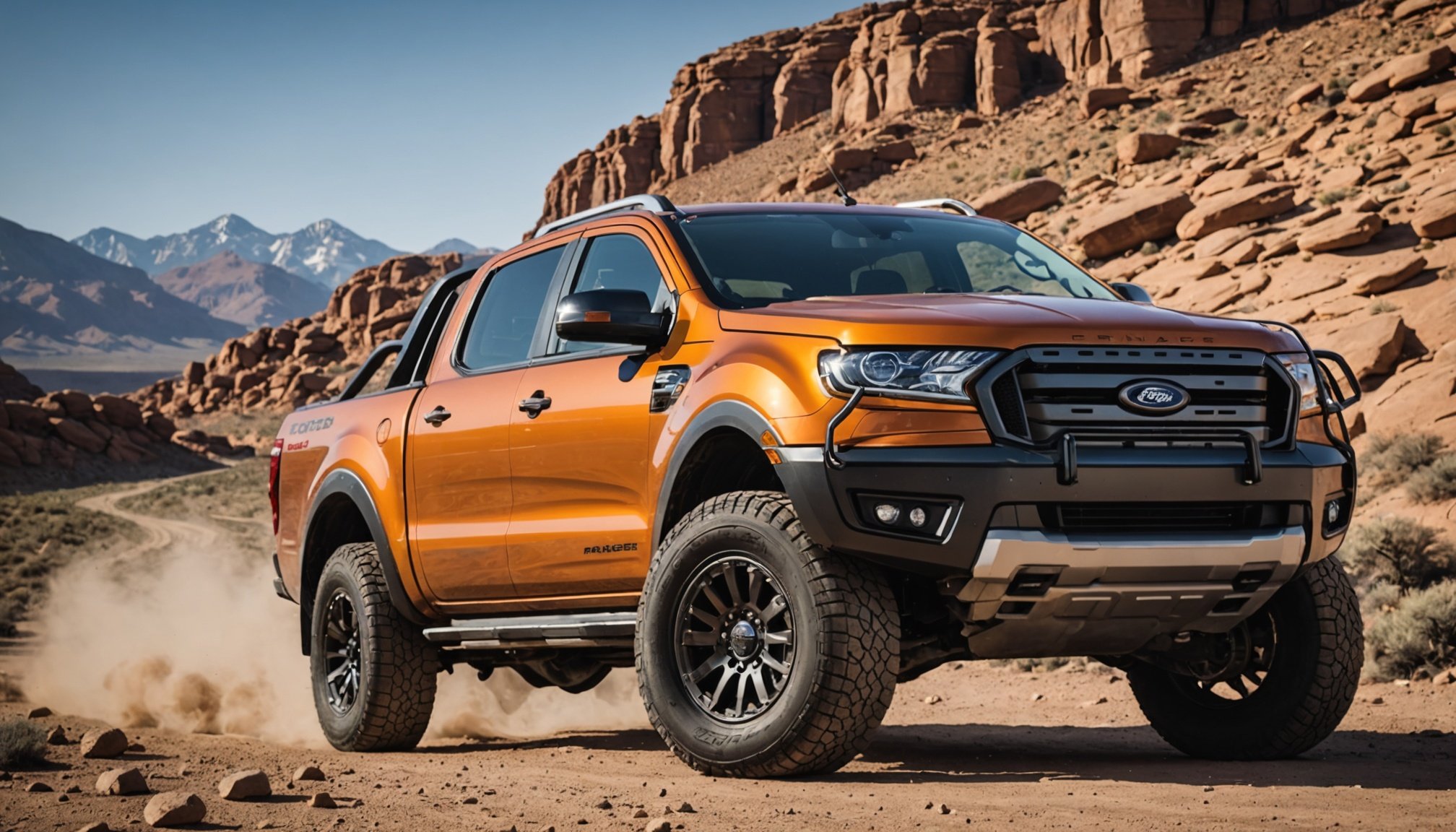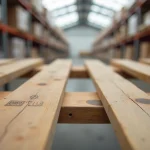Understanding Brake Line Upgrades
The brake line performance in your vehicle is crucial for its overall braking efficiency. Whether driving a Ford Ranger or another model, the choice between stock and aftermarket brake lines can significantly impact performance. In comparison, stock brake lines are typically made from rubber, known for their flexibility but prone to swelling under pressure. This affects the braking response, especially under heavy use.
Aftermarket brake lines are often manufactured from stainless steel or other durable materials that offer superior performance. Material quality is paramount here; stainless steel brake lines provide a firmer brake pedal feel and more precise response. This is because they are less likely to expand as rubber lines might, maintaining consistent hydraulic pressure.
In parallel : Rev Up Your Renault Clio Sport: How Upgrading Your Exhaust Manifold Supercharges Torque
Integrating upgraded brake lines enhances braking efficiency by reducing the amount of force needed to apply brakes effectively. This leads to more controlled stops and an improvement in overall safety. For systems like Ford Ranger brake systems and others, incorporating high-quality aftermarket lines can result in noticeable enhancements. In essence, upgrading to stainless steel or similar-grade flexible brake lines offers a significant advantage in terms of responsiveness and long-term durability, which is critical for drivers seeking optimal braking performance under various conditions.
Benefits of Upgraded Brake Lines
Upgrading to aftermarket brake lines can significantly enhance your vehicle’s braking performance. This improvement is particularly noticeable in Ford Ranger brake systems and similar vehicles. Why? Due to enhanced brake line performance, which results in superior responsiveness during braking situations. With aftermarket brake lines, drivers often experience more immediate feedback when pressing the brake pedal, contributing to safer and more controlled stops.
Also read : Revving Up Performance: Can an Intercooler Upgrade Enhance Efficiency in Your VW Golf GTI Mk6?
A key advantage is the notable reduction in braking distance. With better hydraulic pressure maintenance, these upgraded lines ensure that less pedal effort translates to quicker stopping times. This can prove crucial in emergency braking situations where every inch counts.
Moreover, aftermarket options like stainless steel brake lines provide increased durability and resilience against heat, particularly beneficial under heavy braking. Their resistance to swelling under pressure ensures the braking system maintains its efficiency even in demanding conditions.
In addition, these lines enhance vehicle safety by offering reliable performance and longevity. Their robust construction means fewer replacements and reparative interventions over time, presenting a smart investment. Ultimately, choosing upgraded brake lines is about marrying performance with safety, a synergy every motorist values highly.
Installation of Upgraded Brake Lines
Choosing between DIY brake upgrades and professional installation is crucial when considering brake line upgrades. Each method has its advantages, and the decision heavily depends on your mechanical skills and confidence.
For those opting for a DIY approach, acquiring the essential tools is the first step. Basic requirements include a brake line wrench set, hydraulic jack, and appropriate safety gear like gloves and goggles. Knowledge of safety precautions during brake line installation is equally vital to ensure a safe and successful upgrade. It’s recommended to work in a well-ventilated area and thoroughly understand the vehicle’s braking system before starting.
Professional installation, although potentially more costly, often brings peace of mind. Professionals possess expertise and sophisticated equipment to handle the upgrade efficiently. This method also mitigates risks associated with improper installation, which can affect vehicle performance or safety.
Common challenges encountered during brake line upgrades include dealing with seized fittings and ensuring a proper bleed of the brake system to remove air pockets. Troubleshooting these issues requires patience and precision to avoid compromising the brake line performance. Regardless of the chosen installation method, the objective remains: to achieve optimal performance safely and efficiently, thereby enhancing the overall reliability of Ford Ranger brake systems and other models.
Types of Brake Lines Available
When considering brake line upgrades, it’s essential to understand the different types available. Stainless steel brake lines are praised for their superior strength and resistance to pressure-induced swelling. This quality is particularly beneficial in maintaining consistent hydraulic pressure, thus providing more reliable braking performance. They are an excellent choice for drivers who demand precision and durability.
On the other hand, rubber brake lines represent the standard material found in many vehicles, including those without aftermarket enhancements. While they offer flexibility, they can expand under pressure, possibly compromising brake line performance. This makes them less effective in maintaining a consistent pedal feel compared to their stainless steel counterparts.
However, for those seeking a balance, flexible brake lines combine several material qualities. Typically composed of components that give both durability and flexibility, they are ideal for varying driving conditions. These lines can adapt to different temperatures and pressures, offering dependable performance without the rigidity of stainless steel.
In conclusion, each brake line type has its own advantages and drawbacks. Choose stainless steel brake lines for high-performance needs, rubber brake lines for budget considerations, and flexible brake lines for versatile performance. This understanding aids in making an informed decision that aligns with your driving style and vehicle needs.
Cost Implications of Upgraded Brake Lines
The financial commitment associated with brake line upgrades can vary significantly depending on several factors. Understanding these costs is crucial before undertaking an upgrade. The initial brake line cost depends largely on the material and type of brake line selected. For instance, stainless steel brake lines tend to be pricier due to their high-quality build and durability.
Investing in upgraded brake lines offers long-term savings by minimizing frequent replacements, as observed in customer reviews. While the upfront expense might be substantial, this investment contributes to better vehicle performance and improved safety—offsetting the initial outlay over time.
When setting a budget for upgrades, consider the balance between cost and performance. Aftermarket brake lines, despite being more expensive than stock options, deliver enhanced braking efficiency, which can be a worthy trade-off. Evaluate the cost-to-benefit ratio, considering factors like enhanced control and reduced braking distance.
Ultimately, by comparing the brake line cost of different options, drivers can make informed decisions aligning with their financial expectations and *performance requirements. It is not just an expenditure but an investment towards greater road safety and reliability.
Real-World Benefits and User Experiences
Exploring the customer reviews surrounding brake upgrades provides valuable insights into real-world benefits. Many users report that upgraded brake lines significantly enhance their vehicle’s performance, specifically noting improved braking and responsiveness. This improvement is often perceived in varied driving conditions, from urban commutes to challenging terrains.
Feedback on brake upgrades is particularly positive regarding stainless steel brake lines, which deliver consistent, reliable braking even under intense conditions. Users have frequently mentioned how these upgrades translate to a superior driving experience, often underscoring the reduction in braking distance and improved vehicle control.
Several performance testimonials highlight how drivers feel more confident with upgraded systems, attributing this to enhanced vehicle safety. Testimonials commonly emphasize the peace of mind that comes with knowing their vehicle’s braking system can handle emergency stops more effectively.
Reliability appears to be a significant satisfaction factor, as many drivers appreciate that upgraded brake lines require fewer replacements and maintenance checks. Ultimately, these user experiences underscore the value and reliability of investing in better brake lines, affirming that they are not just an enhancement but a critical component of vehicle safety and performance.
Safety Considerations and Maintenance Tips
Keeping brake line performance optimal is crucial for vehicle safety. Particularly for Ford Ranger brake systems, regular brake line maintenance ensures lasting performance and reliability. Conducting frequent safety checks is vital. These checks help identify issues early on, preventing potential failures during crucial moments.
During your inspection, watch for common signs of wear, such as cracks, leaks, or corrosion. Any of these signs indicate it might be time to replace your brake lines. Especially in aftermarket setups, wear can occur differently, demanding more focused attention. Flexible brake lines require specific care, given their mixed material properties.
To maintain peak performance, follow these maintenance tips:
- Routine Inspections: Regularly inspect for damage or deterioration.
- Cleanliness: Keep the area around the braking system clear of debris.
- Hydraulic Fluid: Ensure there’s an adequate fluid level, and change it as recommended. Fresh fluid helps maintain pressure consistency.
- Professional Checkups: Even if you perform DIY installations, occasional professional inspections can provide assurance of system integrity.
By addressing maintenance proactively, the overall braking efficiency of your vehicle remains uncompromised, sustaining both improved safety and robust performance.









